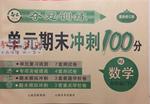题目内容
Determination is a kind of basic quality and this is ___ it takes to do jobs well.
|
A.what |
B.that |
|
C.which |
D.who |
A
【解析】略

 夺冠训练单元期末冲刺100分系列答案
夺冠训练单元期末冲刺100分系列答案Onceupon a time there was a wise man that used to go to the sea to do his writing. Hehad a habit of walking on the beach before he began his work.One day he waswalking along the shore. As he looked down at the beach, he saw a human figuremoving like a dancer. He smiled to himself at the thought that someone woulddance on the beach. So he began to walk faster to catch up. As he got closer, hesaw that it was a young man and the young man wasn’t dancing, but instead he wasreaching down to the shore, picking up something and throwing itinto the ocean. As he got closer, he called out, “Good morning! What are youdoing?’’
Theyoung man paused, looked up and replied, “Throwingstarfishes(海星)in theocean.”
“I guess I should have asked, why are you throwing starfishes in the ocean?”
“The sun is up and the tide is going out.And if I don’t throw them in, they’ll die”
“But, young man, don’t you realize thatthere are miles and miles of beach and starfishes all along it. You can’tpossibly make a difference!”
Theyoung man listened politely. Then he bent down, picked another starfish andthrew it into the sea, and said, “It made a difference for that one.”Thereissomething very special in each and every one of us. We have all beengifted with the ability to make a difference. And if we can know that gift, wewill gain through the strength of our vision the power(力量) toshape the future.
We musteach find our starfish. And if we throw our starfish wisely and well, the worldwill be better.
1.One day, the wise man saw a young man _______.
|
A.dancing along the beach |
B.walking with a dancer |
|
C.picking up starfish for sale |
D.trying to save as many starfishes as possible |
2.The underlined words “something very special” refers to ________.
|
A.the gifts from friends |
B.the strength of making decision |
|
C.our own starfish |
D.the ability to make a difference |
3.From the last two paragraphs, we can learn that ________.
|
A.the wise man realized something new and important |
|
B.the wise man thought it was foolish of the young man to throw starfishes in the ocean. |
|
C.the young man had the ability to make a difference |
|
D.it is necessary for us to save starfish on the beach |
4.The writer told this story to show us _____.
|
A.how and where we can write a good article |
|
B.everyone can do something for the future |
|
C.wise men are sometimes stupid |
|
D.young men are in fact wiser than old people |
Having been ___ volunteer in a day-care centre for weeks, Susan feels much sympathy for ___ disabled.
|
A.a; / |
B./; a |
C.the; the |
D.a; the |
— Hey, buddy, let’s go, remember the movie, Up(飞屋环游记)?
— Sorry, I’m busy .How about ________ ?
|
A.every other day |
B.the other day |
C.any other day |
D.a rain check |